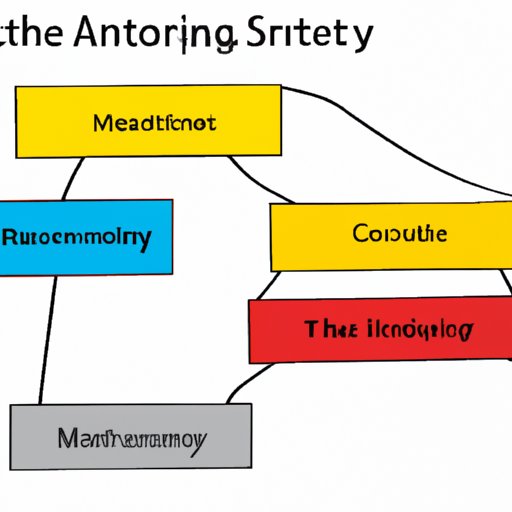Introduction
Characterization is an essential component of any piece of literature. It involves the creation of characters who are believable and relatable, and can be used to create depth and emotion within a story. This article will explore the concept of characterization in literature and provide readers with a better understanding of how it works.
Defining Characterization in Literature: Types and Examples
Characterization is the process of creating and developing characters in a story. It allows authors to bring their characters to life and make them more realistic and relatable. There are two main types of characterization: direct and indirect. Direct characterization involves providing information about a character through physical descriptions or dialogue. Indirect characterization involves giving clues about a character’s personality or emotions through their actions, thoughts, or interactions with other characters.
For example, in the classic novel To Kill a Mockingbird by Harper Lee, the character Atticus Finch is described as a wise and just man. Through his interactions with other characters, such as his daughter Scout, we learn that he is patient, kind, and has strong moral convictions. These traits are revealed through indirect characterization.

How to Create Memorable Characters: A Guide to Characterization
Creating memorable characters requires more than just providing physical descriptions or dialogue. Authors must understand their characters on a deeper level in order to make them come alive for readers. Here are some tips for crafting effective characters:
Understanding Your Characters
Before you begin writing your story, take time to get to know your characters. Ask yourself questions like “What are their hopes and dreams?” and “What motivates them?” Answering these questions will help you create characters that are complex and interesting.
Crafting a Backstory
A character’s backstory can add depth and complexity to your story. Consider including details such as family relationships, past experiences, or childhood memories that shape the character’s current outlook on life. This will help readers connect with the character on a deeper level.
Establishing Character Goals
Giving your characters goals and objectives will give them purpose and direction in the story. Think about what your character wants to achieve and how they plan to do it. This will help make them more dynamic and engaging for readers.
Developing Character Relationships
Relationships between characters can add tension and conflict to your story. Think about how your characters interact with each other and how their relationships affect the plot. This will help create a more compelling narrative for readers.

Exploring the Power of Characterization in Fiction Writing
Characterization can have a powerful impact on a story. It can be used to create conflict, show character development, and utilize archetypes. Here are some ways authors can use characterization to enhance their stories:
Creating Conflict Through Characterization
Conflict is an essential element of any story, and characterization can be used to create it. By having characters with opposing views or goals, authors can create tension and suspense that keeps readers engaged. As Dr. Christina L. Sommers, author of the book Writing Effective Fiction, states, “Conflict is the engine that drives a story forward.”
Showing Character Development
Characterization can also be used to show a character’s journey and transformation. By giving characters flaws and weaknesses, authors can demonstrate how they change and grow over the course of the story. This type of character development makes stories more meaningful and memorable for readers.
Utilizing Archetypes
Archetypes are universal characters that embody certain qualities or traits. By utilizing archetypes, authors can create recognizable characters that readers can relate to. As writer Joseph Campbell states, “The standard path of the mythological adventure of the hero is a magnification of the formula represented in the rites of passage of a ritual master.”
Crafting Dynamic Characters Through Characterization
Creating dynamic characters requires more than just providing physical descriptions or dialogue. Authors must think about how their characters look, sound, and act in order to make them come alive for readers. Here are some tips for crafting dynamic characters:
Adding Details
Adding details to your characters can help make them more vivid and memorable. Consider including physical attributes such as hair color or style of dress, as well as mannerisms such as the way they talk or walk. These details will help readers visualize the characters and make them feel more real.
Utilizing Dialogue
Dialogue is a great way to reveal a character’s personality and inner thoughts. Consider using dialogue to show a character’s emotions, beliefs, and motivations. This will help readers connect with the character and make them more engaging.
Implementing Physical Attributes
Physical attributes can be used to further develop a character’s identity. Think about how a character looks, speaks, and moves in order to create a vivid image for readers. This will help make the character more lifelike and relatable.

Analyzing Characterization: Its Role in Storytelling
Characterization plays an important role in storytelling. It allows authors to create believable characters who readers can relate to. When analyzing characterization, authors should consider a character’s motivations, actions, and reactions in order to gain a better understanding of their role in the story.
Examining Character Motivations
Motivations are the reasons why a character does something. Analyzing a character’s motivations can help authors understand why they behave in certain ways and make decisions. This can help create a more nuanced story and add complexity to the characters.
Dissecting Character Actions
Actions are an important part of characterization. By examining a character’s choices and behaviors, authors can gain insight into their personality and beliefs. This can help create more realistic characters who readers can empathize with.
Analyzing Character Reactions
Reactions are another key element of characterization. Examining how a character reacts to different situations can help authors understand their emotional state and how they perceive the world around them. This can help create more relatable characters who readers can connect with.
Conclusion
In conclusion, characterization is an essential part of any piece of literature. It allows authors to create believable and relatable characters who readers can connect with. By understanding their characters and crafting backstories, establishing goals, and developing relationships, authors can create dynamic characters that will keep readers engaged. Additionally, characterization can be used to create conflict, show character development, and utilize archetypes. Finally, analyzing a character’s motivations, actions, and reactions can help authors gain a better understanding of their role in the story. Characterization is a powerful tool that can be used to craft compelling stories that readers will remember.
(Note: Is this article not meeting your expectations? Do you have knowledge or insights to share? Unlock new opportunities and expand your reach by joining our authors team. Click Registration to join us and share your expertise with our readers.)
